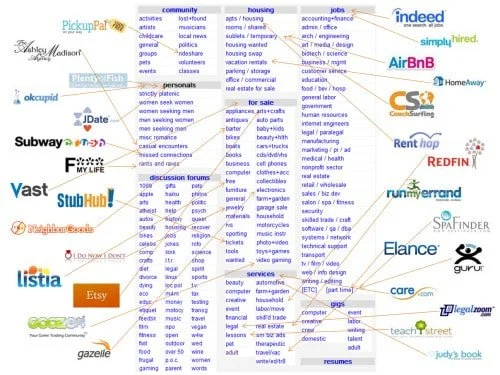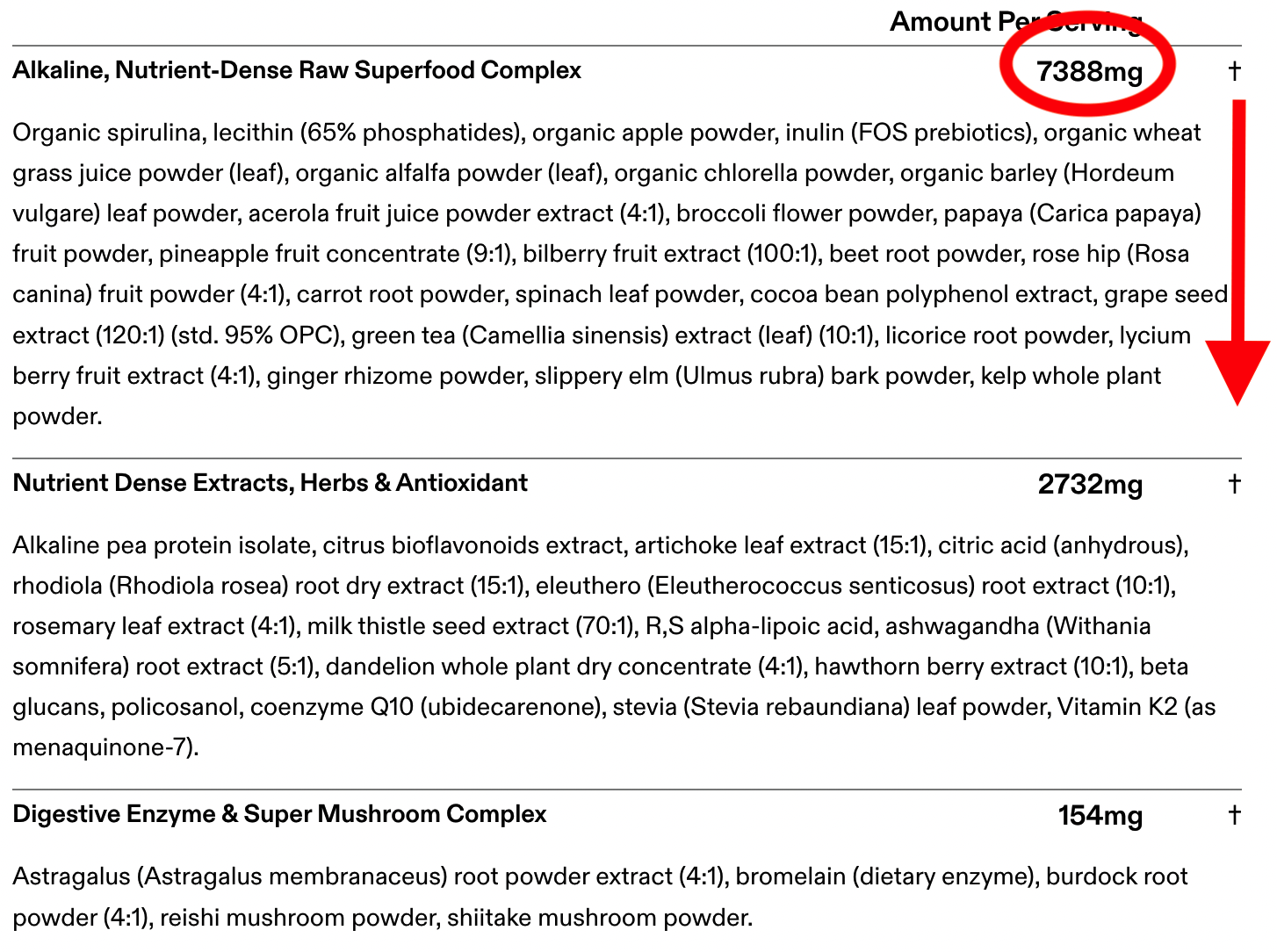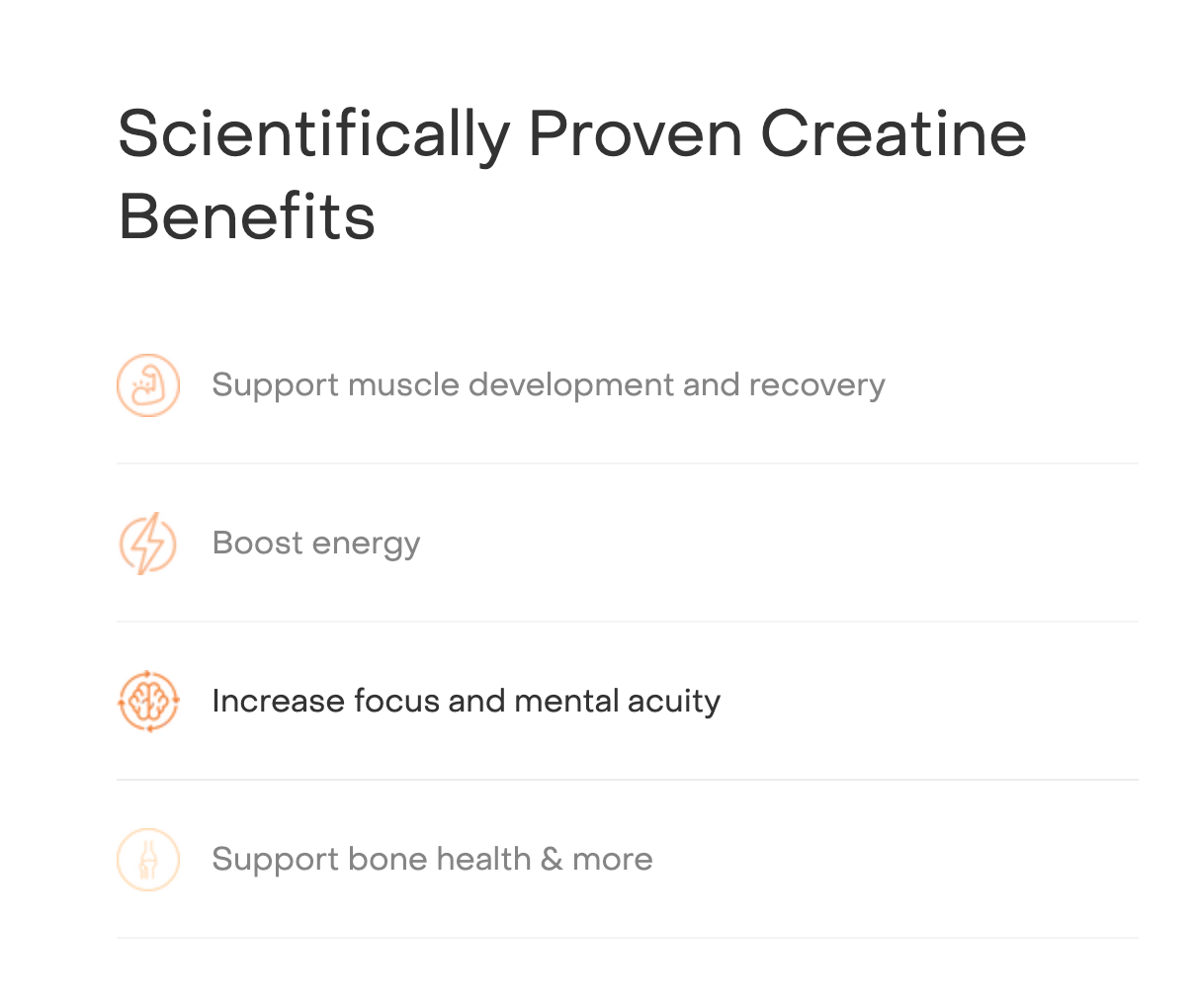Scalpel or Sledgehammer?
Much has been written about the business of bundling and unbundling products and how lucrative it can be. Modern examples that are playing out now include newspapers being unbundled into many specific newsletters, where you choose only the ones you are interested in rather than buying all of the articles in the newspaper.
Another good example is Craigslist, founded in 1995, being unbundled into Airbnb, OKCupid, Indeed etc. Here’s a great visual from the original blog post written in 2010:
In the world of supplements, I like to think of this as sledgehammers vs scalpels.
A sledgehammer represents a bundle of ingredients addressing a customer need that is less specific, but by throwing ingredients at the problem the customer feels like they’re solving it.
A scalpel is a single functional ingredient product, where you target a specific customer or need state with that one ingredient. Arguably a few ingredients grouped together intentionally could also be considered a scalpel.
Both the sledgehammer and scalpel strategies can work well, but you have to know which game you are playing and apply the right frameworks.
Sledgehammers:
Multivitamins are a great example of a bundle in supplements. There’s a laundry list of ingredients, many of which you don’t know or care about. But there’s enough in there that you do care about that you buy it anyway. It’s not customized to your needs at all, you are effectively paying for those ingredients that you don’t care about as well as the ones that you do. This is the sledgehammer. Whatever your perceived “problem” as a consumer, you bludgeon it to death with a blunt instrument by throwing loads of ingredients at it.
So why do people take multivitamins?
There are a few groups who take it for specific deficiencies, or a medical condition. Even within those groups most people just need let’s say two out of 20 of the ingredients in a multivitamin, but it’s more convenient for them to get it from a multivitamin than to buy those two things separately and remember to take them.
In most cases, people buy multivitamins as an insurance policy. “I want to be healthy, and this seems like a low cost and low risk way to maintain my health.” Or so the marketing would have us believe. Generally, you don’t feel any different when you take a multivitamin.
A good current example of a sledgehammer is AG1. It is ridiculously popular. Look at their ingredients list and you’ll see that the majority of ingredients are hidden in “blends”, so you don’t know the exact amount of each ingredient that you’re getting in a serving. Classic sledgehammer move.
What consumers might not know is that each ingredient in the blend legally has to be listed out in order from largest by weight to smallest. So in this top “Alkaline, Nutrient-Dense Raw Superfood Complex” blend for example, Organic Spirulina is the largest ingredient, and kelp whole plant powder is the smallest.
A charitable take on using “blends” here could be that AG1 wants to stop competitors copying their formula. A more likely reason is that some of the ingredients are in such small quantities that it would look ridiculous on the label. And that’s okay! There are customers who don’t care - they want to feel good about themselves, like they’re doing something good for their health everyday. You can build a great business building products for those folks.
Scalpels:
The supplement category has been growing like crazy for decades. People are becoming better educated about the category, and starting to understand their own needs as a consumer. Unbundling the multivitamin presents a huge opportunity. You can tailor your product to a tighter audience or use case.
Here’s a simple one: take the B vitamins and a little Vitamin C out of a multivitamin, and now you have a “Super B complex” supplement:
This product alone sells 30,000 units per month on Amazon. And this is just one of hundreds of B complex vitamin products on Amazon.
You could make an even sharper scalpel and make a single ingredient product, and we see this with the relatively new creatine brand Create. They are all-in on creatine, and as a result their marketing is tightly focused on the benefits of just creatine. But they’re able to go deep, and talk about creatine as a workout product, creatine for the brain, creatine for bone health:
They also use website real estate to talk about the quality of their product. This is SUPER important if you go the scalpel route, because unless you have exclusive access to an ingredient, it is a commodity. You need to have something to differentiate yourself. In this case, Create references certifications, where they buy their creatine from, and why their product is more expensive in their FAQ section.
They have also launched stickpack drink mixes as an alternate way to consume creatine. This brings in a new customer type who is more interested in drinking a powdered mix than taking a gummy product, but keeps them focused on the ingredient and its trending popularity.
It’s worth noting that they have also launched one sledgehammer product, the “daily performance” gummy. I’d be curious to know to what extent that cannibalizes sales from their core gummy as it also leads with creatine as the hero ingredient.
So which is better for your brand?
Ultimately it comes down to who your audience is. If you have a narrow audience that are connected to each other and experience similar problems, e.g. ultra marathoners, you should make a scalpel. These folks are highly educated on their needs while running 50+ miles at a time. Every ingredient is scrutinized, and that’s an opportunity for you to really deliver exactly what they’re looking for.
If you see a larger trend brewing, and want to go after a mass audience, the sledgehammer might be the way to go. Usually going after a broader audience is going to take a little bit more marketing dollars to get you off the ground. The customer is less interested in the specific ingredients, but more interested in what benefits your product offers them. Anecdotally, I’d say this group is also much less willing to deal with any bad tasting notes in your product. You should spend time asking yourself how you will remain differentiated in this market too, as fast followers will see your success and jump in.
If I was starting over again tomorrow, I’d build a scalpel. It’s easier to get product feedback and talk to customers when they are a tighter knit group. You can delight them as a whole before you try to broaden your appeal and conquer new customer groups.




